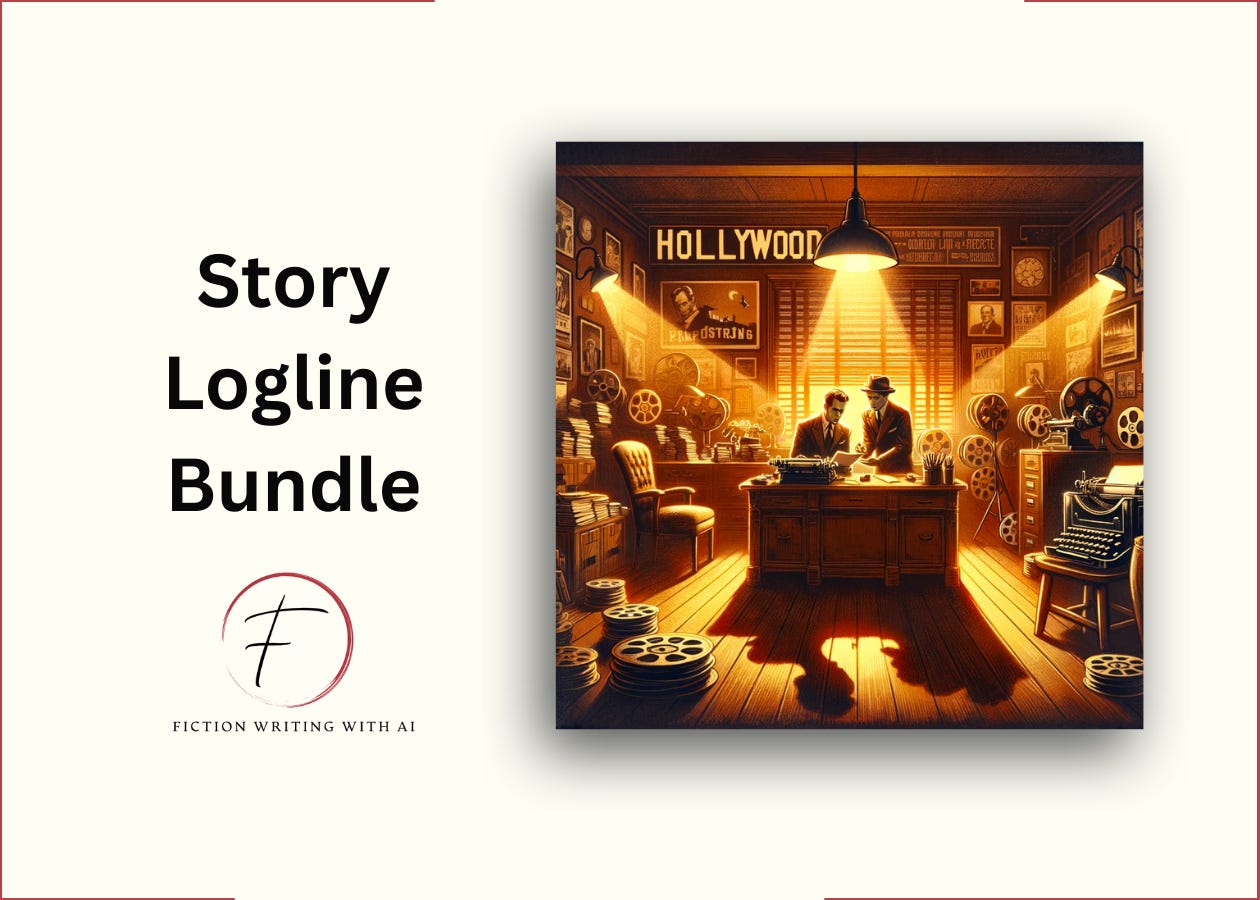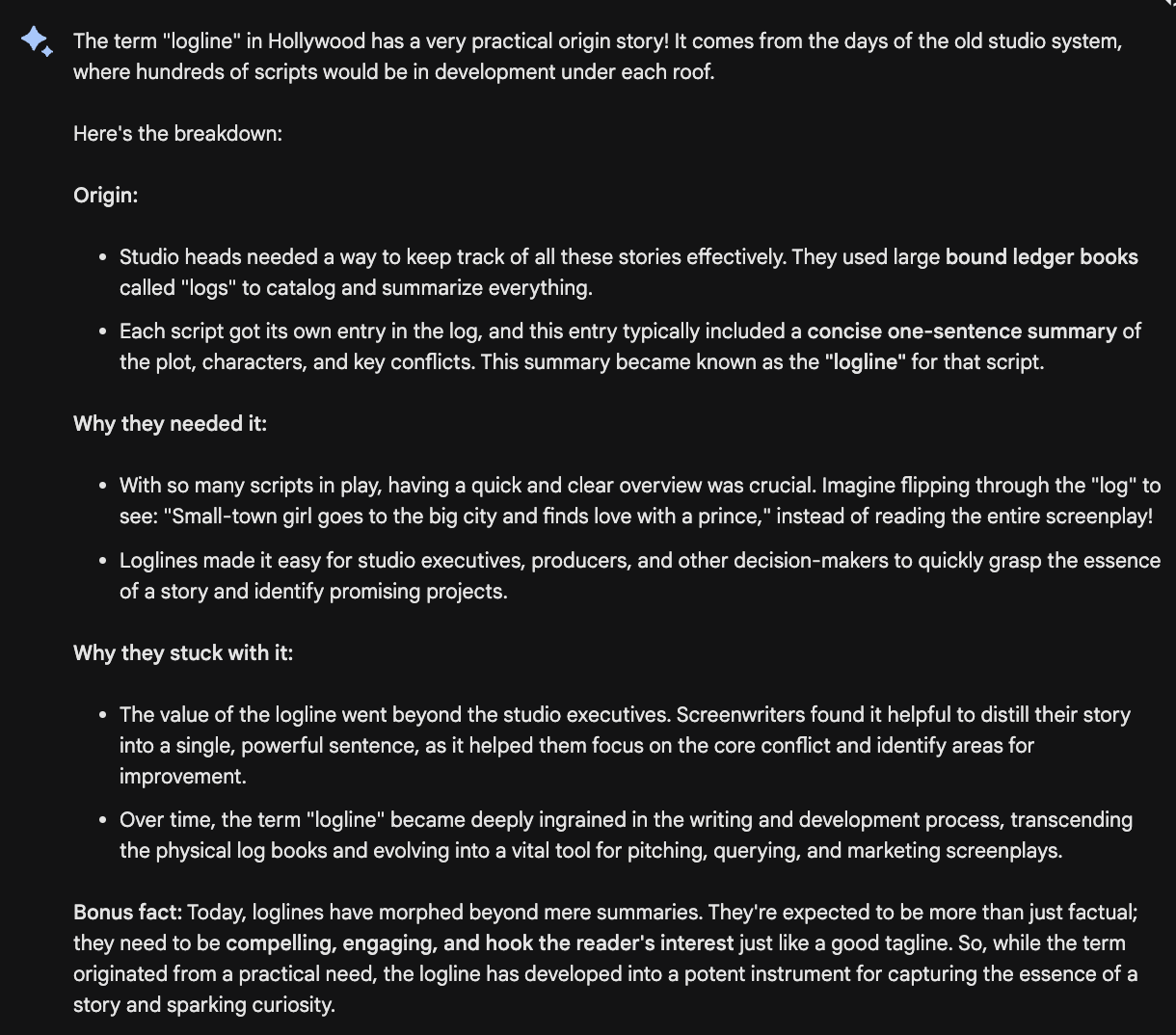How To Write A Logline: A Prompt To Write 10 Killer Concepts For Your Story (And Avoid Months Of Misdirection)
Hey there!
So, you’ve got an idea for a novel.
The scenes are swimming in your head like a movie.
You itching to get everything down on paper.
Whoa!
Slow down their cowboy/girl. Not so fast! Before you jump headlong into your first draft, pause, take a half-step back, and make sure you can craft a tight, engaging logline that encapsulates your story.
By nailing your logline first, you’ll ensure all the elements of your story hang together before you spend months of wasted effort crafting a dud.
“Thanks, Cole, but what the heck is a logline? It sounds like the punchline in a forest-themed stand-up comedy show. 'And then the tree said, 'That's not my leaf, that's my logline!'”
Ba-dum-tss
Ok, seriously.
What Is A Logline?
The short answer:
It’s a headline for your story—concise, clear, and attention-grabbing. It offers up just enough information to capture the theme of your story without spoiling it for the reader. In one-sentence, it introduces the protagonist, touches on the main conflict, and hints at the outcome—all in about 25-30 words. Shew!
(According to Bard, we have Hollywood to thank for the term.)
Before the internet and fancy databases, studio heads “logged” a single “line” about every story they were pitched in a ledger book.
And thus we have loglines!
See if you can guess this iconic story:
A spirited farm boy joins a rebellion to save a princess from a sinister imperial enforcer—and the galaxy—from a planet-destroying weapon.
The movie is Star Wars. And in this single sentence you get the protagonist (Luke Skywalker), a hint at the central conflict (stopping the Empire’s battle station), and the possible outcome (Luke trying to save Leia from Vader). In just 24 words, it captures everything you need to evaluate if this best-selling premise would appeal to audiences.
You never know, you could write a tight logline like this that turns into over $775 million too. (We hope you do!)
How To Write A Killer Logline To Anchor Your Story
If you are familiar with how we teach headline writing inside Ship 30 for 30, then this logline framework will look familiar.
Here it is:
THE WHO: Your protagonist & antagonist.
THE WHAT: The problem that pushes the protagonist into action.
THE WHERE: The time / place / setting of your story.
THE HOW: The central conflict the protagonist must overcome
THE WHY: The goal the protagonist hopes to achieve.
These 5 elements are the only thing you need to write an effective logline.
And when you put them all together, they fit into this simple little template.
In a (SETTING) a (PROTAGONIST) has a (PROBLEM) caused by (an ANTAGONIST) and (faces CONFLICT) as they try to (achieve a GOAL).
All you have to do is fill it in!
For example:
WHO: A skeptical paranormal investigator and a vengeful spirit.
WHAT: Unexplainable and violent ghostly activity
WHERE: In a haunted Victorian mansion.
HOW: Face their own disbelief.
WHY: Solve the mystery.
In a haunted Victorian mansion, a skeptical paranormal investigator encounters violent ghostly activities, challenging their disbelief as they strive to solve the mystery of a vengeful spirit.
Refine your logline until you pare it down to the bare essentials in 25-30 words or less. Remove filler words until only the most critical bits remain to convey the backbone of your idea.
Easy!
The 5 Biggest Mistakes Writers Make Crafting A Concept For Their Story
Before you put pen to paper, here are a few things to watch out for:
Mistake #1: Too Vague
"A boy discovers magic is real and gets caught in the middle of a war."
This logline lacks specifics that bring intrigue or stakes. Key details are missing about the magic system, what the boy does, the warring sides and outcomes. To improve it, get concrete.
For example, "An orphaned stable boy discovers he can wield magic and joins an underground battle between Rebel wizards and the corrupt king using dark magic to destroy them.”
Mistake #2: Passive Protagonist
“After her village is attacked by orcs, an elf priestess must protect her people."
The protagonist is passive, only reacting versus taking decisive action. There’s no sense of her struggle or quest. Instead, show her choices and objectives.
For example, "To save her villagers from invading orcs, an elf priestess ventures into the treacherous Orc Mountains seeking an ancient weapon to defeat them."
Mistake #3: Forced Stakes
“A thief must undertake one last heist to pay off her father’s gambling debts or the mafia will kill her sister.”
The stakes feel contrived and disconnected from the protagonist’s actions. This diminishes investment in the outcome. To fix it, make the stakes an intrinsic result of the quest.
For example, “A reformed thief must use her criminal talents to infiltrate a deadly crime syndicate and steal back an object of huge personal value, while resisting her darker urges.”
Mistake #4: Too Specific
"A junior editor at the Tri-City Gazette newspaper must uncover the truth behind a series of bizarre pet store robberies across 12 locations, leading her to discover a sinister plot by an eccentric billionaire planning a run for mayor."
In attempting to hook readers with specifics, this logline provides unnecessary details that bog it down. The robberies, number of locations, and eccentric billionaire are all overkill. Strip away the excessive specifics to refocus on protagonist, conflict and stakes essentials.
For example, "A struggling junior reporter investigates a bizarre string of pet store robberies, only to stumble upon a sinister political conspiracy at the highest level."
The key is not to overload the logline with details that will unfold in the actual story. Resist cramming in specific characters, subplots or twists beyond the core hook. Leave your audience wanting more rather than trying to explain too much at once!
Mistake #5: No Irony
"A talented young wizard trains to join the kingdom's elite magic academy and serve its wise royal court."
This straightforward logline lacks a hook or twist that captivates attention. There is no irony or surprise that catches the reader off-guard.
Add irony or an unexpected element: "A talented young wizard trains to join the kingdom's elite magic academy, only to discover the royal court practices corrupt magic and she must lead a rebellion against them."
This irony immediately casts the story in a new light. Rather than a simple tale of a girl rising through magical ranks, she must turn against the very institution she aimed to serve. This surprise suggests far higher stakes and more exciting conflicts to unfold.
Train AI To Write 10 Pitch Ready Loglines
Now that you know what a logline is, how to write one, and what to watch out for, you are in the perfect position to leverage AI to write one for you—and not just 1, a bundle of 10!
For this prompt, you will need to choose a Sub-Genre and a Plot-Archetype. And when you are ready, fill in the placeholder inside the prompt with your details. Then copy/paste it into your favorite AI engine and hit enter.
Here’s the prompt:
Keep reading with a 7-day free trial
Subscribe to Fiction Writing With AI to keep reading this post and get 7 days of free access to the full post archives.





